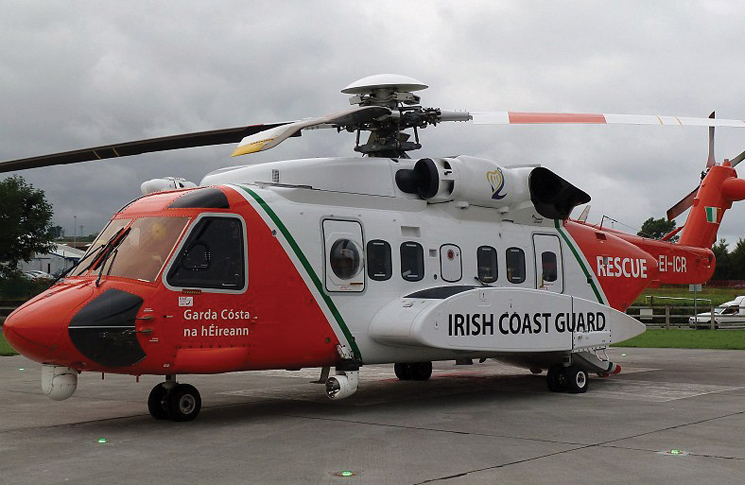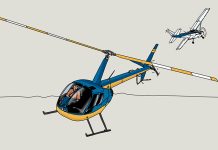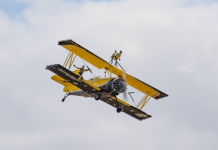A terrible danger waited on the spot in the ocean where the real world and the digital world diverged.
Sikorsky S-92A, EI-ICR, Rescue 116
Black Rock, Mayo, Ireland
0046, Tuesday 14 March 2017
‘Out of the murderous innocence of the sea,’
W B Yeats, A prayer for my daughter, 1921.
The reports were varied, like a story passed on in whispers, but the gist was clear – sort of. A crew member on a fishing vessel in the Atlantic had their thumb, or the tip of their thumb, crushed under a rope, or maybe a winch. Several years later a then-junior doctor in the west of Ireland would tell a coronial inquest she didn’t think the injury as described to her warranted a helicopter evacuation. Regretfully, she felt she was too new in the profession to have her opinion heard.
But on the evening of 13 March 2017, the situation was thought serious enough for captain Dara Fitzpatrick to be called back in to work at the Irish Coast Guard. Fitzpatrick, 45, left her 3-year-old son in the care of her sister. She would be home for breakfast. As she drove towards the floodlit multistorey carparks of Dublin International Airport, she was on the phone to the crew of the other helicopter assigned to the task. Rescue 118, based at Sligo on Ireland’s west coast would perform the uplift. Dublin-based Rescue 116, a Sikorsky S-92 like Rescue 118, would fly as top cover for the rescue flight.
Top cover was a feature of offshore rescues. It involved being first on scene, identifying the casualty vessel, establishing communications with the casualty vessel and the search and rescue (SAR) helicopter, briefing the casualty vessel’s crew, providing on-scene weather and navigation to the SAR helicopter and maintaining overwatch until the SAR helicopter had returned close to shore. It was a job better suited to a fixed-wing aircraft but the Irish Air Corps, which often flew a Spanish CASA CN235 as top cover for the Coast Guard, had stood down.
At Dublin SAR base on the quiet side of the airport away from the bright lights of the terminals, Fitzpatrick met co-pilot Mark Duffy, winch operator Paul Ormsby and winchman Ciaran Smith. They held a briefing for the flight, with a planned refuelling at Sligo. By 2255, the S-92’s 2 GE turboshafts were running up with the moaning of their gas generators giving way to a rising sound like an orchestra tuning for a performance. Seven minutes later, the frenzied drumming of the main rotor rose by a semitone as Rescue 116 lifted from runway 16 and set course over the ancient landscape of Ireland for the Atlantic coast.
During the flight, Rescue 118 called to say it was refuelling at Blacksod on the Mullet Peninsula, where the weather and ceiling were now acceptable. Blacksod was 50 nm closer to the search area than Sligo and, at 4 minutes after midnight in thick IMC, the pilots of Rescue 116 changed their plan and set course for Blacksod.
Out to sea
In accordance with the procedures of the Coast Guard’s aviation contractor, CHC Ireland, Fitzpatrick and Duffy began the DVE14 Approach checklist as they approached the coast. Fitzpatrick briefed that they would fly west of a waypoint called BLKMO then turn round to intercept the approach. As set out in CHC’s operations manual, she was stabilising the approach as early as possible. BLKMO was almost in the same place as a rocky island, Black Rock, that jutted 269 feet above the sea. A lighthouse, unmanned since 1974, stood on top and flashed either white or red every 12 seconds. Despite this proximity, it was the first point of CHC’s Blacksod Approach South route.
At 0028, the helicopter crossed the Mayo coast and 6 minutes later began its descent to a selected 1,500 feet. Fitzpatrick commented on the high terrain at Achill Island, in their ‘nine o’clock position’, and the winchman Smith, monitoring the forward-looking infra-red camera (FLIR), announced ‘all clear ahead’. As they descended through 2,400 feet, Approach One mode was selected, most likely by Duffy, at Fitzpatrick’s command, and the helicopter continued on autopilot down to 200 feet above the sea. Duffy called the altitude, first in hundreds, then in tens of feet.
As they descended through 800 feet, Fitzpatrick asked Duffy to ‘confirm we’re clear ahead on radar and on E GYP WIZZ [EGPWS – Enhanced Ground Proximity Warning System]’. He responded, ‘you are clear ahead on 10 mile range’.
As they began the left turn towards BLKMO, Smith announced the helicopter was ‘clear around to the left’. About 30 seconds later, Duffy confirmed they were ‘ah, clear ahead on E GYP WIZZ and radar’. The pilots began the before landing checklist. During this Duffy said, ‘Starting to get ground coming in there at just over 8 miles in the 10 o’clock position’. Fitzpatrick reported she could see the surface of the sea.
At 0045, Duffy said, ‘Okay, so small targets at six miles at 11 o’clock, large out to the right there’. Approximately 20 seconds later an automated voice sounded ‘ALTITUDE, ALTITUDE’, and Fitzpatrick said, ‘Just a small little island that’s B L M O [sic] itself’. A few seconds later, Smith announced, ‘Looking at an island just eh, directly ahead of us now guys, you wanna come right Dara’. Fitzpatrick asked for confirmation and Smith replied, ‘Twenty degrees right yeh’. Keeping to procedure, Fitzpatrick instructed Duffy to select the heading, which he did. Smith spoke again, urgently, ‘Come right now, come right, come right!’
The S-92’s sophisticated digital flight data recorder recorded the end in grotesque detail. It meticulously encoded the collective being pulled up rapidly in the last few seconds of the flight, the cyclic yanked back and to the right, vertical acceleration peaking at 2.17 g and rotor speed slowing to 94.25 per cent. As the helicopter struck the top of Black Rock, vertical speed briefly touched 3,000 fpm upwards before recording a descent at 8,000 fpm into the sea. The cockpit voice recorder revealed a cacophony: ‘ALTITUDE!’ sounded for the final time, followed by the thud of impact and automated voices declaiming, ‘SMOKE IN BAGGAGE!’, ‘DECOUPLE!’, ‘TOO LOW GEAR!’. It also recorded an expletive – mild under the circumstances – from Duffy, followed by him giving the last of the crew’s many verbalisations of situational awareness: ‘We’re gone.’
The final report mentions automation bias, a cognitive bias towards information from automated systems over other sources such as paper charts.
Post mortem
Duffy’s severely injured body was found 12 days later strapped in his seat on the seabed. Rescue 118 flew to the scene at once, after a grim briefing from its pilot on the additional danger of operating under extreme emotional stress. They found Fitzpatrick before dawn, floating face up but unresponsive. Without her flight helmet, they could recognise her red hair. A post-mortem examination later that morning showed the aircraft commander, who had done underwater escape refresher training the previous week, had been tough and resourceful to the last. Her life jacket was inflated, which could only have been done by hand, and divers later found the cockpit window jettisoned near the fuselage on the seabed. A pathologist concluded it was likely she had escaped from the right-hand captain’s seat at least 10 metres and possibly 40 metres under the sea, under immense pressure, paralysing cold and total darkness. Her lungs would have been compressed from 5 litres capacity to 2 litres, and barotrauma during the ascent probably contributed to her drowning. Nothing was found of Smith and Ormsby although 2 severely damaged helmets hinted at their fate.
Phantom rock
The preliminary report, published less than a month after the crash, contained an extraordinary sentence that did not appear in the final report, published in November 2021: ‘In relation to Black Rock and its lighthouse, the EGPWS manufacturer informed the investigation that ‘The lighthouse obstacle is not in the obstacle database and the terrain of the island is not in our terrain database’.’
With no record of Black Rock in its database, the EGPWS stayed silent as the crew approached at a steady 90 knots groundspeed. Hindsight makes it too easy to see their use of the ‘E-GYP WIZZ’ as a mistake but this was not the action of a rogue crew, it was the standard operating practice of the organisation. It created a mental model that the crew found it hard to break out of, even when Black Rock loomed ahead on the FLIR screen.
With no record of Black Rock in its database, the EGPWS stayed silent as the crew approached at a steady 90 knots groundspeed.
The final report mentions automation bias, a cognitive bias towards information from automated systems over other sources such as paper charts. This needs to be considered in the context of the CHC Ireland operations manual instructions, also in the report, which said, ‘Maximum use should be made of automation and SAR approach modes.’
Fitzpatrick and Duffy had got most of their information from the aircraft’s FMS. Duffy had looked at a printed map of the route in a folder (he is heard on the CVR saying he ‘wouldn’t mind just getting a look at the map of it there’) but the only indications of a lighthouse on the printed route was a small red dot and a number representing height, which could easily have gone unnoticed under the vibration and acknowledged poor cockpit lighting of the S-92. As if to emphasise the point, early in the flight Fitzpatrick said, ‘The lights in this thing drive me mad’, to which Duffy had agreed.
Black Rock was not shown on the 1:50,000 imagery on the Toughbook laptop at Smith’s SAR operator’s station, which instead showed open water in the vicinity and the 1:250,000 Euronav aeronautical chart did not extend as far as Black Rock.
Black Rock was not shown on the 1:50,000 imagery on the Toughbook laptop at Smith’s SAR operator’s station.
A combination of cloud and altitude meant the crew were never able to see the lighthouse flashing. From the final report: ‘On the final flight path, with the helicopter at a distance to run of 1,000 m or less, the helicopter was effectively below the beam of light and thus, irrespective of the prevailing weather conditions, the beam could not have been observed by the flight crew.’
Fatigue may have played a role, the report found. ‘The flight crew members’ likely hours of wakefulness at the time of the accident were correlated with increased error rates and judgment lapses’ and the risk was increased by the relative monotony of a top cover flight. Fitzpatrick had been awake, with no more than 25 minutes sleep, since 0615 and Duffy since 0715.
A combination of cloud and altitude meant the crew were never able to see the lighthouse flashing.
Lost opportunity
Route knowledge at CHC Ireland was ‘base-centric’, in the final report’s phrase, and was housed in people’s heads. On a flight the previous week, a different flight crew had briefed to fly Rescue 116 on the Blacksod south route. They planned to fly at 500 feet when one of the crew who had previously been based at Sligo pointed out Black Rock. Ormsby was the winch operator on the flight. As it happened, moonlight had allowed an overland approach to Blacksod that night. A week later, one of Fitzpatrick’s remarks was telling: ‘God, I’d say I haven’t been in Blacksod in about 15 years.’
CHC Ireland’s safety management system had been deficient. In June 2013 one of its pilots had noticed Black Rock lighthouse was missing from the EGPWS database and had emailed several colleagues, including some involved in the route guide/FMS updating. The pilot said the lighthouse was an ‘obvious hazard’ and suggested that although it was mentioned ‘in the route notes’, the EGPWS issue should be ‘highlighted as well’. Another pilot made a similar report the next day and a pilot also emailed the EGPWS manufacturer. However, nothing was done to correct the oversight.

A situation had evolved where CHC Ireland helicopters were using EGPWS as part of their navigation. But Irish Government Air Accident Investigation Unit chief investigator Jurgen Whyte told the coronial inquest in June 2022, EGPWS was primarily a warning system used when approaching airports or high terrain. ‘It is not designed to be used to navigate at low level,’ he said. Whyte said that even if Black Rock had been considered for inclusion in a map inside the EGPWS system, it would not have been included because the island was less than 100 metres high.
The investigation found there was: no formal procedure or training about how to use the route guide, no design standard for routes, no formal, standardised training/checking of route briefing and the operator did not have a SAR standards pilot. It also found there had been confusion at the government level about responsibility for oversight of SAR operations in Ireland.
The final report concluded, ‘The accident was, in effect, what [Professor James] Reason termed an organisational accident’. If not checked, organisational drift is a slow tide every bit as implacable as the poetic murderous innocence of the sea, and it sent what should have been a low-risk flight into solid rock and cold dark water.





